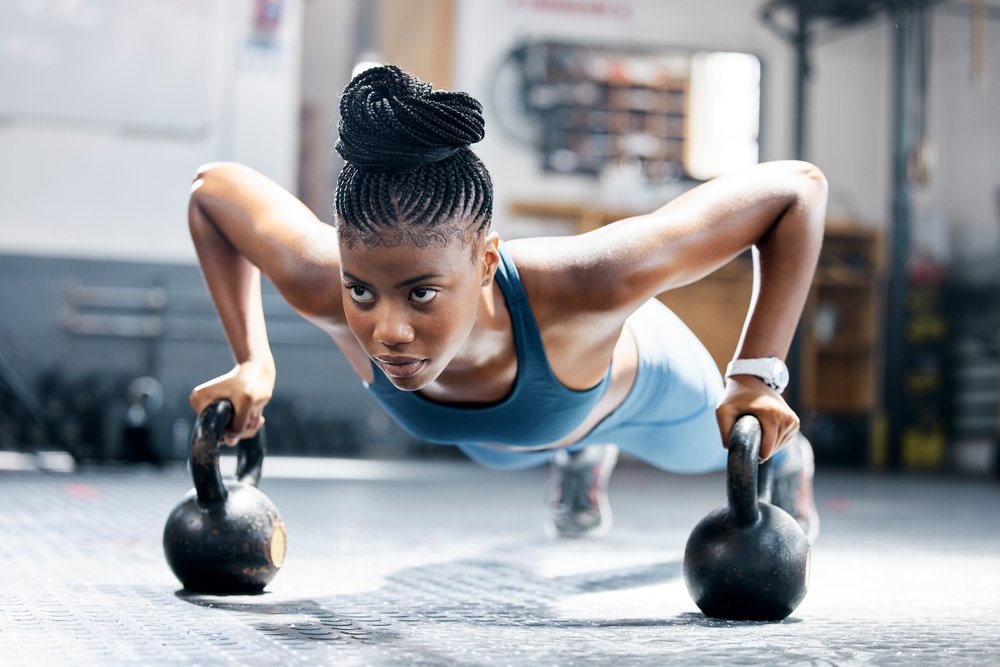The pursuit of a stronger, more defined upper body often leads people to lengthy gym sessions, but new research suggests that shorter, high-intensity workouts can deliver comparable—if not superior—results. The key lies in efficiency.
Why does this dumbbell workout work so well?
By blending strength training with cardiovascular elements, this routine maximizes muscle activation while keeping heart rates elevated. This combination not only builds lean muscle but also boosts endurance and burns fat. High-intensity resistance training has been shown to improve metabolic function, meaning the body continues to burn calories even after the workout ends.
This workout follows the principles of high-intensity interval training (HIIT), a method that has been widely studied for its benefits in both strength and endurance. By pushing the muscles to near failure in short bursts, followed by controlled recovery, the body adapts quickly, leading to noticeable gains in a short time.
Minimal equipment, maximum results
One of the most appealing aspects of this routine is its simplicity.
What do you need?
All that’s required is a pair of medium-to-heavy dumbbells and a yoga mat. Unlike traditional weightlifting programs that demand multiple machines or specialized equipment, this workout is designed to be accessible and effective, whether in a gym or at home.
The key to success lies in choosing the right weight. Dumbbells between 10 and 25 pounds are recommended, depending on individual strength levels. The weight should feel challenging by the final few reps of each set but not so heavy that it compromises form. Proper form is essential in preventing injury and ensuring each muscle group is fully engaged.
A strategic warm-up for peak performance
Before diving into the circuits, a proper warm-up ensures that muscles are primed for movement and reduces the risk of strain.
What does the warm-up look like?
- Plank walkouts with shoulder taps engage the core while activating the shoulders.
- Pushup to downward dog transitions increase flexibility and prepare the chest and triceps.
- Crossbody mountain climbers elevate the heart rate while reinforcing stability and coordination.
Each of these movements should be performed for 30 seconds, followed by a controlled V-sit hold for active recovery. This method ensures the muscles are activated without unnecessary fatigue before the workout begins.
Breaking down the workout structure
The workout is divided into four progressively challenging circuits, each targeting different aspects of upper body strength and stability.
How do the circuits build intensity?
- The first circuit focuses on wide chest presses and pushups, building foundational strength in the chest, shoulders, and triceps. A hollow body hold at the end of the set activates the core.
- The second circuit introduces pullovers and scapular retraction movements, which enhance shoulder mobility while strengthening the back and upper arms.
- The third circuit ups the challenge with chest flies and climbing planks, demanding both strength and control.
- The final circuit features renegade rows, requiring stability and coordination as both the core and upper body engage simultaneously.
By structuring the workout in a progressive manner, each movement builds upon the last, ensuring that all major upper body muscle groups are thoroughly trained.
Scaling for all fitness levels
Not everyone starts at the same fitness level, and this workout accounts for that with built-in modifications.
How can beginners adjust the difficulty?
- Pushups can be performed from the knees to reduce intensity while maintaining form.
- Renegade rows can be done with knee support, ensuring stability without compromising engagement.
- Lighter dumbbells can be used to master form before progressing to heavier weights.
By allowing flexibility in execution, this workout remains accessible to beginners while still presenting a challenge for more experienced individuals.
The importance of recovery and long-term progress
No workout plan is complete without a proper recovery strategy.
What should post-workout recovery include?
- A steady-state cardio session the following day helps flush out lactic acid and aids muscle recovery.
- Hydration and proper nutrition support muscle repair and growth.
- Stretching and mobility exercises prevent stiffness and reduce the risk of injury.
Tracking progress is also essential. By noting weight selection, rep counts, and overall exertion, participants can gradually increase their strength and endurance over time.
This dumbbell workout is a game-changer, proving that time-efficient training can be just as effective as traditional methods. With strategic movement selection, progressive intensity, and an emphasis on form, it provides a complete upper body challenge in under 20 minutes. Whether the goal is strength, endurance, or overall fitness, this routine delivers results without unnecessary complexity.














